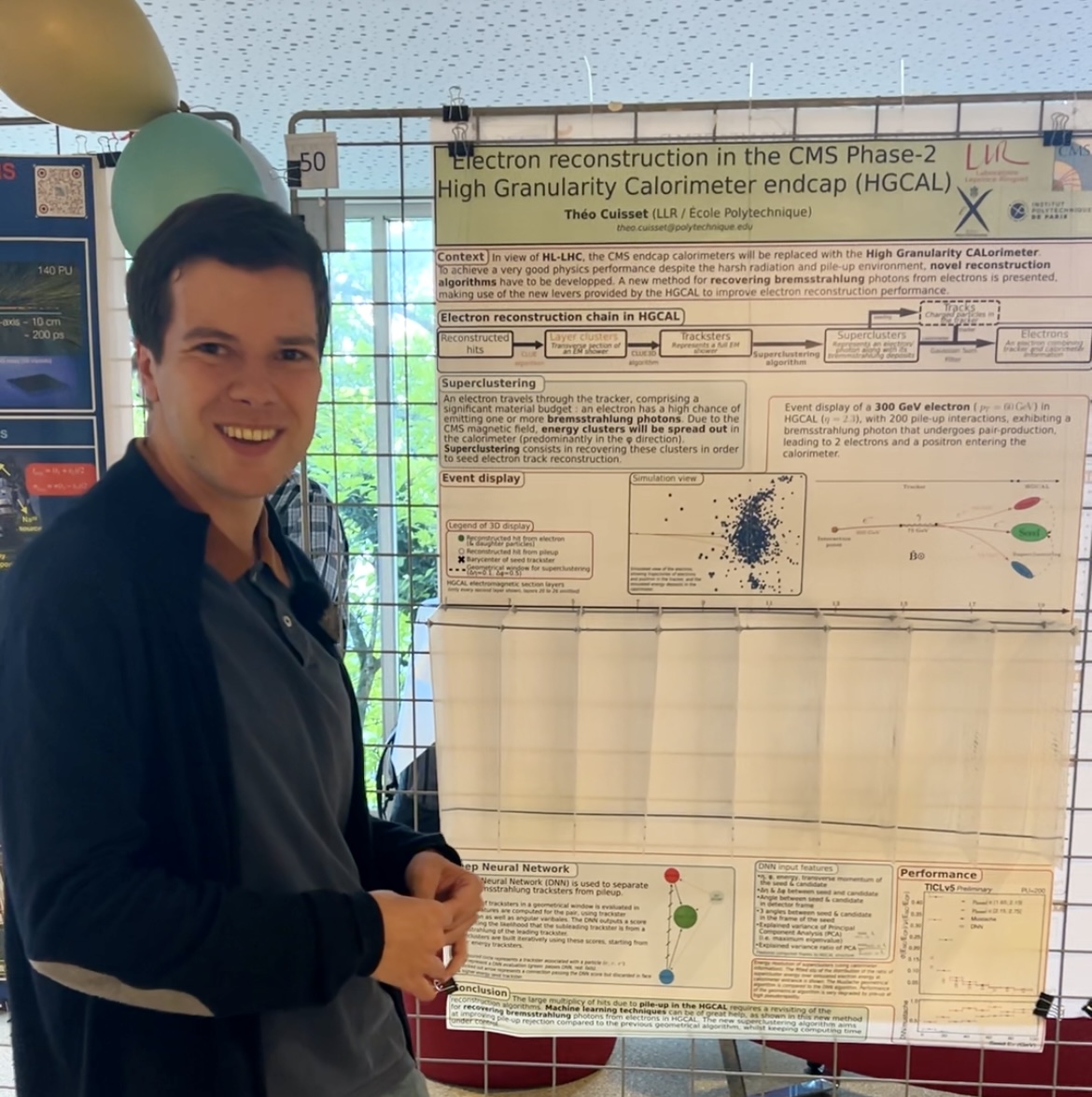
The CMS Experiment welcomed more than 300 collaborators during the CMS Upgrade Week from September 16 to 20, 2024. The week showcased the immense amount of work underway to transform the CMS detector ready for the LHC High Luminosity era, also known as Hi-Lumi. This new phase of the LHC and of CMS will start taking data in 2030 and will shape the future of particle physics.
The week started off on Monday, 16 September with a visit to the CERN Prevessin site to show the CMS collaborators around the labs, listen to experts from each project, and to ask any questions they might have to the experts responsible for that part of the new build. The labs included on the tour were the iRPC assembly labs, GEM assembly labs, CSC test stands, BCAL frontend electronics upgrade and ECAL supermodel, and the LHC control room.

The tour was followed by the opening plenary to kick off the week, that gave an overview of the parts of the future CMS detector, both in terms of the short-term work happening at the end of the year, and the more involved upgrades leading up to 2030. Throughout the whole week, dedicated parallel talks and workshops took place diving deep into each aspect and bringing together members of the collaboration who are usually based far from one another.
Tuesday, 17 September was marked by a milestone announcement: the long-anticipated result of the W-boson mass. After almost a decade of research, the CMS collaboration unveiled findings that shed new light on the particle’s characteristics.

Following this, students from the collaboration showcased their upgrade projects through engaging posters. The poster session was a lively event that encouraged all CMS members to interact with the students, learn about the latest developments, and vote for their favourite poster. The winners were:
#1 Theo Cuisset (LLR/École Polytenique (FR)) presenting “Electron reconstruction in the CMS Phase-2 High Granularity Calorimeter Endcap”
#2 Seulgi Kim (University of Seoul, Department of Physics (KR)) presenting “Contribution of Korea in GEM production for CMS Phase-2 Upgrade”
#3 Abigail Catherine Warden (University of Wisconsin Madison (US)) presenting “Performance and quality control of the first CMS GE2/1 production chambers”
#3 Manos Vourliotis (University of California San Diego (US)) presenting “The Line Segment Tracking Algorithm in the CMS Phase 2 High Level Trigger.”

Winner of the poster session, Theo Cuisset, presenting his research on HGCAL. Photographed by: Nefeli Stathaki
Later that evening, about 8000 people, including members of the personnel, contractors, students, visiting scientists, friends and family, came together to celebrate CERN’s 70th birthday in a CERN wide mini-festival.
However, exploring what the future holds for CMS hadn’t finished just yet! On Wednesday 18th, there was a second round of visits for the CMS members, this time to the Meyrin site’s labs. Senior members and students alike had the chance to visit a variety of spaces: the HGCAL sensor testing lab, MTD sensor testing lab, BCAL electronics integrated lab, Tracker (& BCAL) integration facility, Tracker TBPS mechanics workshop, ECAL crystals and medical applications lab, HGCAL hexaboards and electronics systems integration, DAQ development & testing lab, Linac, and the Synchro Cyclotron.

On Friday, September 20, the week rounded off with a visit to Point 5 (P5) in Cessy, France, where the CMS detector is located. The site is already undergoing a huge amount of work to make it ready for the assembly of the new detector pieces, new cooling systems, and the like. The tours themselves covered the surface buildings and their current or proposed evolutions, new constructions in the service cavern (USC) 95 meters underground, and the newly finished CMS control room. As the works continue, the visiting CMS collaborators now have a deeper understanding of how the site is evolving over the next few years.

Visit of CMS collaborators during CMS Upgrade Week to the CMS experiment site in Cessy, France at LHC Point 5. Photographed by: Saskia Rodriguez. (Image: CERN). Find all the photos here.
The CMS Upgrade Week was a resounding success, exhibiting the collaborative spirit, the knowledge sharing within the community and the innovative energy driving the experiment's Phase-2 evolution. From celebrations for precise measurements at LHC such as the W-boson mass result, to student-led poster presentations and tours of cutting-edge laboratories, the week highlighted the exciting advancements and opportunities for the future of particle physics!

